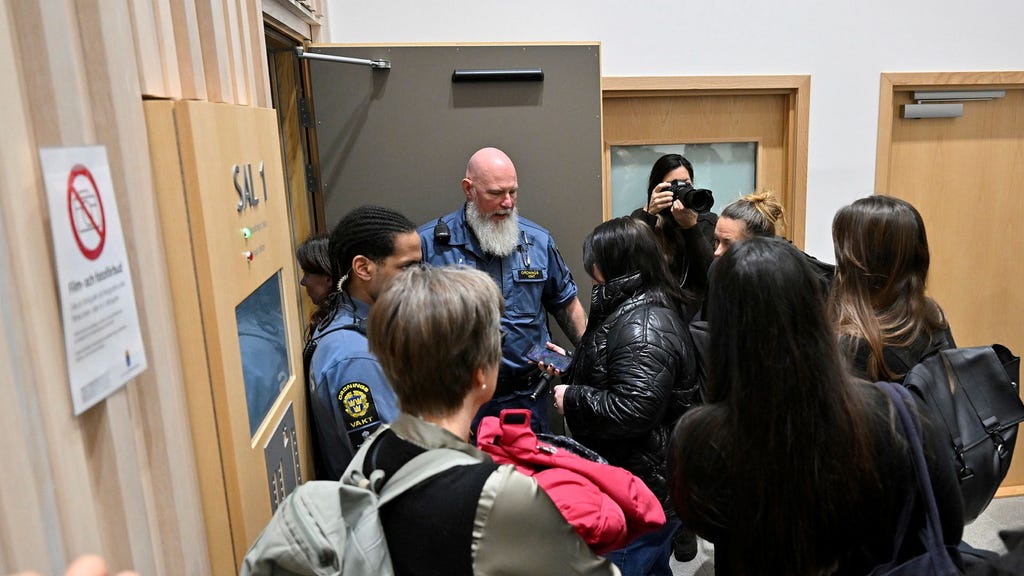The discovery of 37-year-old Ako’s body, encased within a suitcase on the island of Värmdö in March of the previous year, marked the beginning of a complex and disturbing murder investigation. The initial day of the subsequent trial unveiled the chilling possibility that the murder had been premeditated over an extended period, a suspicion further fueled by Ako’s own premonition of danger emanating from the accused, a 25-year-old woman. His documented concern to the police a mere month before his death – ”I wonder what she has in her sights” – underscores the ominous undercurrent that characterized their relationship leading up to the tragic event. This statement, laden with foreboding, now forms a crucial piece of the puzzle that the court must assemble to unravel the truth surrounding Ako’s untimely demise.
The emerging narrative suggests a web of intricate relationships and potentially hidden motives. Ako’s expression of unease to authorities, though not explicitly accusatory, points to a palpable tension and distrust that existed between him and the accused. The prosecution’s theory of a meticulously planned murder implies a level of premeditation and calculated action, contrasting sharply with any notion of a crime of passion or spontaneous violence. This premeditation, coupled with Ako’s expressed fear for his safety, paints a picture of a relationship fraught with underlying conflict, the nature of which remains a central question for the court to explore.
The investigation and subsequent trial must delve deep into the dynamics of Ako’s relationship with the accused woman. Understanding the nature of their connection, whether personal, professional, or otherwise, is critical to piecing together the potential motives behind the alleged crime. Furthermore, exploring any documented history of conflict, disputes, or threats exchanged between the two will form a key component of the prosecution’s case. The courtroom proceedings will likely involve painstakingly analyzing communication records, financial transactions, and witness testimonies to establish a timeline of events and unearth any patterns of behavior that might shed light on the circumstances surrounding Ako’s death.
The gravity of the situation is underscored by the grim discovery of Ako’s remains in a suitcase, suggesting an attempt to conceal the body and potentially delay the investigation. This act, in itself, speaks to a degree of premeditation and planning, adding further weight to the prosecution’s argument. The method of disposal, the chosen location on Värmdö, and any forensic evidence recovered from the suitcase and surrounding area will be meticulously examined to glean further clues about the perpetrator’s actions and potential motive. The logistics involved in transporting a body and concealing it in such a manner will undoubtedly be scrutinized, possibly providing insights into whether the accused acted alone or had accomplices.
The trial also brings into focus the crucial role of forensic evidence in building a compelling case. DNA analysis, fingerprint identification, and other forensic techniques will be employed to link the accused to the crime scene and the suitcase. Examining the victim’s body for any signs of struggle, the cause of death, and the estimated time of death will be vital in reconstructing the events leading up to the tragic discovery. The forensic experts’ testimony will be integral to the proceedings, providing scientific backing to the prosecution’s claims and helping the jury form a comprehensive understanding of the events.
Ultimately, the trial seeks to establish the truth behind Ako’s death and deliver justice. The proceedings will unfold as a complex interplay of witness testimonies, forensic evidence, and legal arguments. The prosecution will strive to prove beyond reasonable doubt that the 25-year-old woman is responsible for Ako’s murder, demonstrating not only her involvement but also the premeditated nature of the crime. The defense, on the other hand, will seek to challenge the prosecution’s narrative, potentially highlighting alternative explanations or raising questions about the reliability of the evidence presented. The jury’s task will be to carefully weigh the evidence, assess the credibility of the witnesses, and ultimately determine the guilt or innocence of the accused. The outcome of the trial will have profound implications for all involved, offering a measure of closure for Ako’s loved ones while upholding the principles of justice.














